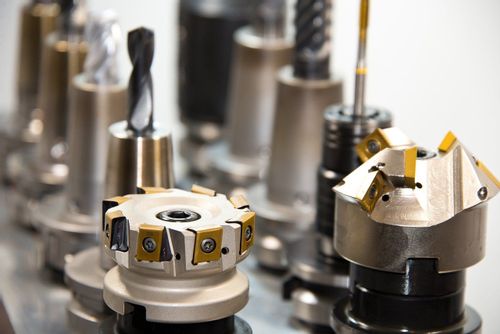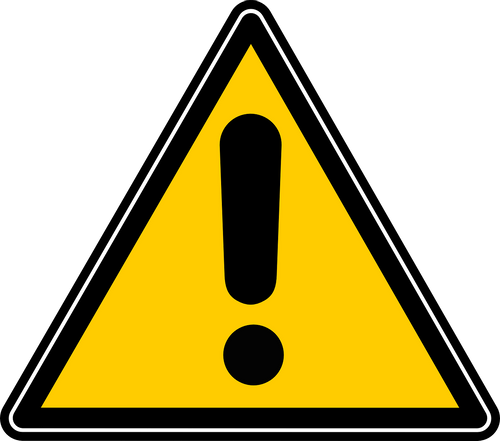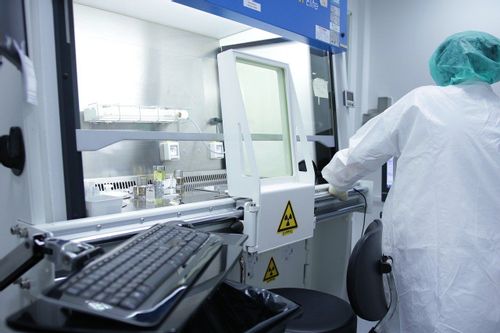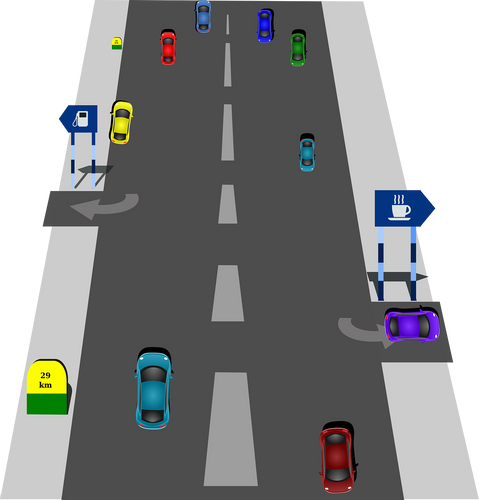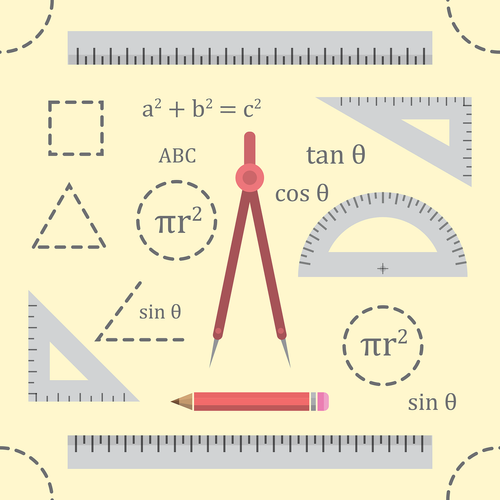Standards Packages
iTeh together with SIST has developed and compiled a comprehensive collection of standard packages to support your standard requirements. Our packages cover an array of content that includes quality management, risk management, road vehicles, machine safety, and much more. With over 200 packages to choose from, you are sure to find a collection to suit your standard needs.
Latest Standards
This document specifies a method for determining the tear strength of leather using a double edged tear. The method is sometimes described as the Baumann tear. It is applicable to all types of leather.
- Standard3 pagesEnglish languagesale 15% off
- Standard4 pagesFrench languagesale 15% off
This document specifies the management and control of cashmere goat farming and herding in the supply chain. This includes proper use of rangelands and pastures, housing and/or nomadic production system, reproduction, feeding, breeding and health, cashmere harvesting, labelling and traceability of fibre and herds.
- Standard26 pagesEnglish languagesale 15% off
- Standard28 pagesFrench languagesale 15% off
IEC 61169-23:2025, which is a sectional specification (SS), provides information and rules for the preparation of detail specifications (DS) for pin and socket connector for use with 3,5 mm rigid precision coaxial lines with inner diameter of outer conductor 3,5 mm (0,137 8 in).
This document specifies mating face dimensions for high performance connectors – grade 1, dimensional details of standard test connectors – grade 0, gauging information and tests selected from IEC 61169-1, applicable to all detail specifications relating to series 3,5 mm RF connectors.
This document indicates recommended performance characteristics to be considered when writing a detail specification and it covers test schedules and inspection requirements for assessment levels M and H.
These connectors are constructed so as to affix on the 50 Ω, 3,5 mm rigid precision coaxial line described in IEC 60457-5, and to provide low reflection to 34 GHz. These connectors can be intermated with SMA (IEC 61169-15) and 2,92 mm (IEC 61169-35) connectors.
- Standard26 pagesEnglish languagesale 10% offe-Library read for1 day
This document specifies minimum requirements for light-weight protectors designed to provide protection for the eyes or eyes and face from biological hazards, such as pathogenic micro-organisms in human or other animal bodily fluids that can deposit onto the face or eyes. NOTE 1 Typical scenarios for use include healthcare, retail and transport settings. This document specifies requirements for both single-use (disposable) and re-usable (disinfectable) products or components. This document applies to all afocal (plano) and prescription lensed protectors and their components. This document does not cover the respiratory equipment required for protection against aerosols, which can be used in conjunction with these eye protectors, and for which other standards apply. This document does not apply to — protectors intended for protection from specific hazards, e.g. mechanical hazards, harmful artificial optical radiation, dusts, molten metals, heat, flame, hot solids, harmful gases, vapours (refer to ISO 16321-1 to ISO 16321-3), — protectors specifically for sports (refer to the ISO 18527 series), — protectors for lasers (refer to ISO 19818-1), and — respiratory protection against aerosols (refer to ISO/TS 16975-4). NOTE 2 Guidance related to the specific selection, use and maintenance is provided in Annex A. NOTE 3 Where eye and face protection is incorporated in protective equipment, such as a hood, full face respirators, powered air purifying respirators (PAPR) hoods and headtops, the relevant requirements of this document apply to the components providing eye and face protection.
- Standard25 pagesEnglish languagesale 15% off
- Standard27 pagesFrench languagesale 15% off
The document provides guidelines for the management of electrically powered mobile toilets that are connected to water and electricity under public epidemic emergencies (PEEs) from different perspectives, including users, operators, and suppliers. It also gives recommendations to provide safe sanitation services for users, cleaners, and waste tank drivers. It is applicable to epidemic situations of major respiratory tract and intestinal infectious diseases, but not to group unexplained diseases, major food and occupational poisoning and other events that seriously affect public health.
- Standard13 pagesEnglish languagesale 15% off
This document establishes the minimum performance requirements and tests for seat-belt assemblies and seat-belt anchorages on earth-moving machinery, necessary to restrain an occupant within a roll-over protective structure (ROPS) in the event of a machine roll-over (see ISO 3471:2008, ISO 12117-2:2008/Amd 1:2016, and ISO 13459:2012/Amd 1:2022), or within a tip-over protection structure (TOPS) in the event of a machine tip-over (see ISO 12117:1997). This document is not applicable to seat-belt assemblies and seat-belt anchorages manufactured before the date of its publication.
- Standard10 pagesEnglish languagesale 15% off
- Standard10 pagesFrench languagesale 15% off
IEC 60645-7:2025 applies to instruments designed for the measurement of auditory evoked potentials from the inner ear, the auditory nerve, and the brainstem, evoked by either acoustic or vibratory stimuli of short duration. This document defines the characteristics to be specified by the manufacturer, specifies performance requirements for two types of instruments (screening and diagnostic/clinical), and specifies the functions to be provided on these types. It also specifies a means of describing the physical characteristics, in terms of electrical waveforms, of audiometric reference and test signals of short duration used with auditory evoked potential equipment and other equipment (e.g. otoacoustic emission instruments), and methods for their measurement. The purpose of this document is to ensure that measurements made under comparable test conditions with different instruments complying with this document will be consistent. This document is not intended to restrict development or incorporation of new features, nor to discourage innovative approaches. Evoked response measurement using the application of electric stimuli to a subject is beyond the scope of this document.
- Standard24 pagesEnglish languagesale 10% offe-Library read for1 day
This document specifies requirements and guidelines for organizations to consider biodiversity in their strategies and operations, thereby adopting a biodiversity approach.
It is applicable to any type of organization, irrespective of its size or nature (e.g. large groups, public institutions, local authorities, mid-cap companies, associations, micro-structures, single-member companies), sector, level of development and the extent to which it includes biodiversity protection in its activities.
- Standard26 pagesEnglish languagesale 10% offe-Library read for1 day
- Standard20 pagesEnglish languagesale 15% off
- Standard22 pagesFrench languagesale 15% off
This document specifies the functions and quality evaluation of the specimen collection booth as part of pandemic response management for respiratory diseases. NOTE COVID-19 is an example of a disease for which such a specimen-collection booth is developed.
- Standard18 pagesEnglish languagesale 15% off
This document specifies the characteristics for suspension diaphragms to achieve, together with applicable inspection and test methods to be carried out for verification. An air spring system usually consists of a diaphragm (subject of this document) and additional components such as either emergency or additional springs, or both, and other assembly parts. This document does not detail the other components of air suspension or control systems such as air reservoirs, air piping, levelling system, frames, stiffeners, emergency suspension systems or elastic supports (such as series springs), etc., which will affect the diaphragm performance. This document applies to suspension diaphragms (inflated with air) designed to be fitted on railway vehicles and similar vehicles running on dedicated tracks with permanent guide systems, whatever the type of rail and the running surface. These parts are typically made with elastomer, textile fabrics and metallic beads.
- Standard43 pagesEnglish languagesale 15% off
- Standard46 pagesFrench languagesale 15% off
This document specifies a screening test method to quantify rapidly the activity concentration of gamma-emitting radionuclides, such as 131I, 132Te, 134Cs and 137Cs, in solid or liquid test samples using gamma-ray spectrometry with lower resolution scintillation detectors as compared with the HPGe detectors (see IEC 61563[7]).
This test method can be used for the measurement of any potentially contaminated environmental matrices (including soil), food and feed samples as well as industrial materials or products that have been properly conditioned[8]. Sample preparation techniques used in the screening method are not specified in this document, since special sample preparation techniques other than simple machining (cutting, grinding, etc.) should not be required. Although the sampling procedure is of utmost importance in the case of the measurement of radioactivity in samples, it is out of scope of this document; other International Standards for sampling procedures that can be used in combination with this document are available (see References [9] [10] [11] [12] [13] [14]).
The test method applies to the measurement of gamma-emitting radionuclides such as 131I, 134Cs and 137Cs. Using sample sizes of 0,5 l to 1,0 l in a Marinelli beaker and a counting time of 5 min to 20 min, decision threshold of 10 Bq·kg−1 can be achievable using a commercially available scintillation spectrometer [e.g. thallium activated sodium iodide (NaI(Tl)) spectrometer 2” ϕ × 2” (50,8 mm Ø x 50,8 mm) detector size, 7 % resolution (FWHM) at 662 keV, 30 mm lead shield thickness].
This test method also can be performed in a “makeshift” laboratory or even outside a testing laboratory on samples directly measured in the field where they were collected.
During a nuclear or radiological emergency, this test method enables a rapid measurement of the activity concentration of potentially contaminated samples to check against operational intervention levels (OILs) set up by decision makers that would trigger a predetermined emergency response to reduce existing radiation risks[2].
Due to the uncertainty associated with the results obtained with this test method, test samples requiring more accurate test results can be measured using high purity germanium (HPGe) detectors gamma-ray spectrometry in a testing laboratory, following appropriate preparation of the test samples[15][16].
This document does not contain criteria to establish the activity concentration of OILs.
- Standard31 pagesEnglish languagesale 10% offe-Library read for1 day
This document applies to water meters used to meter the volume of cold potable water and hot water flowing through a fully charged, closed conduit. These water meters incorporate devices which indicate the integrated volume.
This document specifies criteria for the selection of single, combination and concentric water meters, associated fittings, installation, special requirements for meters, and the first operation of new or repaired meters to ensure accurate constant measurement and reliable reading of the meter.
In addition to meters based on mechanical principles, this document also applies to water meters based on electrical or electronic principles, and to water meters based on mechanical principles incorporating electronic devices, used to measure the volume of cold potable water and hot water. It also applies to electronic ancillary devices. Ancillary devices are optional. However, national or international regulations may make some ancillary devices mandatory in relation to the utilization of the water meter.
The recommendations of this document apply to water meters, irrespective of technology, defined as integrating measuring instruments determining the volume of water flowing through them.
NOTE Any national regulations apply in the country of use.
- Standard19 pagesEnglish languagesale 10% offe-Library read for1 day
This document specifies two methods to assess the quality of sealed anodic oxidation coatings on aluminium and its alloys:
— Method 1 which assesses the quality of sealed anodic oxidation coatings by measuring the loss of mass after immersion in a phosphoric acid based solution without prior acid treatment;
— Method 2 which assesses the quality of sealed anodic oxidation coatings by measuring the loss of mass after immersion in a phosphoric acid based solution with prior acid treatment.
Method 1 is applicable to anodic oxidation coatings intended for decorative or protective purposes or where resistance to staining is important.
Method 2 is applicable to anodic oxidation coatings intended for outdoor architectural purposes. For less severe applications, Method 1 can be more suitable.
The methods are not applicable to the following:
— hard-type anodic oxidation coatings which normally are not sealed;
— anodic oxidation coatings that have been sealed only in dichromate solutions;
— anodic oxidation coatings produced in chromic acid solutions;
— anodic oxidation coatings that have undergone treatment to render them hydrophobic.
NOTE 1 While the methods assess the quality of hydrothermal sealing applied to anodized aluminium, they can be appropriate for other sealing methods.
NOTE 2 The methods are destructive and can serve as reference methods in case of doubt or dispute regarding the results of the test for loss of absorptive power (see ISO 2143) or the measurement of admittance (see ISO 2931).
- Standard14 pagesEnglish languagesale 10% offe-Library read for1 day
This document describes the type, layout, location, and feedback display of available electro-mechanical and electronic transmission gear shifters found in passenger cars (including sport utility vehicles and light trucks) and in commercial vehicles (including heavy trucks and buses). The transmission gear shifters are located on the steering column, instrument panel, floor and centre consoles. Specifically, this document addresses shift by-wire electro-mechanical selectors that adapt the control of vehicle movement according to road conditions and personal preference. Conventional mechanical shifters are also referenced so correspondence between traditional linear P, R, N, D, L, M/S control types, layouts, locations and direction of control motions and electro-mechanical/electronic transmission gear shifters (simply, e-shifters) can be established. This document is based on observations and survey results described in Annexes A and B for passenger cars and commercial vehicles respectively. The results are independent of vehicle propulsion systems and define the layout, spatial orientation and control movement patterns for the following drive functions: — drive (D=forward movement), — reverse (R=rearward movement), — park (P=stationary), — neutral (N=freewheeling to allow stationary or forward-reverse without drive functions engaged), — low (L=remain in low gear),and/or — manual or sequential (M or S to engage manual drive mode). The control types of the transmission gear shifters that are within scope of this document are lever (pivot, slider and gated), dial/rotary, push button and toggle switch. Paddle shifters and ‘automatic-manual shifters’ are not specifically included in the scope. However, they are referenced so that if a transmission gear shifter has a ‘manual mode’ by which drive gear control is transferred to or shared with the paddle or automatic-manual transmission it is identified. This document also identifies control types, location and feedback displays of drive mode selectors. Their control types within scope are lever, dial/rotary, push button, toggle/rocker switch, touch screen and steering wheel paddle switches. These are located in the centre console, steering wheel or instrument panel of the vehicle. Various types of visual, auditory or haptic feedback correspond to display activations, control positions, and graphical representations in the head-up display, centre console, instrument panel, display audio or instrument cluster display. This document does not specifically include head-up displays, but it is foreseeable that graphical representations could appear in future head-up displays. Leaving the limitations of mechanical shifters means control freedom gets bigger. It is therefore likely that control types as well as the combination of transmission and brake functions will continue to develop. In this document, specific details about hybrid or electric drives are excluded. The same is in general valid for engine brake, auxiliary brake, or regeneration/recuperation programs. However, brake functions are to some extent still mentioned as part of drive modes found in the surveys. For commercial vehicles, and with the continued introduction of electric drivelines, these brake programs are likely to get even more related to different drive modes. It is foreseen that more information can be added at later stage, as separate ISO documents.
- Technical report57 pagesEnglish languagesale 15% off
- Amendment4 pagesEnglish languagesale 10% offe-Library read for1 day
IEC 61000-4-30:2025 defines the methods for measurement and interpretation of results for power quality parameters in AC power supply systems with a declared fundamental frequency of 50 Hz or 60 Hz. Measurement methods are described for each relevant parameter in terms that give reliable and repeatable results, regardless of the method’s implementation. This document addresses measurement methods for in-situ measurements. This document covers two classes of measurement methods (Class A and Class S). The classes of measurement are specified in Clause 4.
NOTE 1 In this document, “A” stands for “advanced” and “S” stands for “surveys”.
Measurement of parameters covered by this document is limited to conducted phenomena in power systems. The power quality parameters considered in this document are power frequency, magnitude of the supply voltage, flicker, supply voltage dips and swells, voltage interruptions, transient voltages, supply voltage unbalance, voltage harmonics and interharmonics, rapid voltage changes, mains communicating system (MCS) voltages, magnitude of current, harmonic currents, interharmonic currents and current unbalance. Emissions in the 2 kHz to 150 kHz range are considered in Annex C and Annex D. Depending on the purpose of the measurement, all or a subset of the phenomena on this list can be measured.
NOTE 2 Test methods for verifying compliance with this document can be found in IEC 62586-2.
NOTE 3 The effects of transducers inserted between the power system and the instrument are acknowledged but not addressed in detail in this document. Guidance about effects of transducers can be found IEC TR 61869-103.
This fourth edition cancels and replaces the third edition published in 2015. This edition constitutes a technical revision.This edition includes the following significant technical changes with respect to the previous edition:
a) IEC 61000-4-30:2015/AMD1:2021 and IEC 61000-4-30:2015/COR1:2016 were included.
b) The measurement method for rapid voltage changes (RVC) has been corrected and extended.
c) The measurement method for voltage events has been updated and extended.
d) Annex C was divided into 2 parts:
1) Annex C: The measurement method from IEC 61000-4-7:2002 and IEC 61000‑4‑7:2002/AMD1:2008, Annex B for conducted emissions in the 2 kHz to 9 kHz range has been separate
2) Annex D: A new measurement method for conducted emissions in the 9 kHz to 150 kHz range has been added.
e) Annex D (underdeviation and overdeviation parameters) was removed.
f) Annex E (Class B) was removed.
- Standard95 pagesEnglish languagesale 15% off
- Standard102 pagesFrench languagesale 15% off
- Standard197 pagesEnglish and French languagesale 15% off
- Amendment9 pagesEnglish languagesale 10% offe-Library read for1 day
IEC 60794-1-110:2025 defines test procedures used to establishing uniform requirements for mechanical performance - kink. It applies to optical fibre cables for use with telecommunication equipment and devices employing similar techniques, and to cables having a combination of both optical fibres and electrical conductors. IEC 60794-1-2 gives general requirements, definitions and a complete reference guide to test methods of all types.
This first edition cancels and replaces Method E10 of the first edition of IEC 60794-1-21:2015, which will be withdrawn. This edition constitutes a technical revision.
This edition includes the following significant technical changes with respect to the previous edition:
addition of "4.7";
addition of "Annex A".
- Standard12 pagesEnglish languagesale 10% offe-Library read for1 day
This document specifies qualification of the personnel regarding the tasks to be performed in the context of the maintenance of plant, infrastructure and production systems to fulfil the requirements of the maintenance job.
This document describes the knowledge, skills, and competencies required for the qualification of maintenance personnel. These guidelines can be used for training, skills validation of maintenance personal and career planning.
This document covers the following professional roles in the maintenance organization:
- Maintenance Technician Specialist;
- Maintenance Supervisor;
- Maintenance Engineer;
- Maintenance Manager.
These designations can be adapted based on company practices and operational organization. An example of an organizational structure can be seen in Annex A.
This document does not specify the verification criteria nor the specialized training of the personnel, which is related to specific sectors.
NOTE Specialization and profession are the subjects of the training carried out in the relevant sector.
- Standard27 pagesEnglish languagesale 10% offe-Library read for1 day
This document defines a standardized accuracy and precision evaluation process for modelling from 3D scanned data. The set of processes, activities and tasks described in this document provides a common framework for evaluating quality factors such as accuracy and precision for modelling from 3D scanned data. This document is not intended to evaluate the 3D printed product itself.
- Standard25 pagesEnglish languagesale 15% off
Benefits

Full Standards Solution
Our catalog includes not only latest standards but also full meta information about related standardization project lifecycle.

Cost Effective
Our PRICE MATCH GUARANTEE policy with multi-level volume discounts gives our clients the best option in the market. In addition, you can get access to the standards for 3, 10, or 30 days.

Stay Notified
Get alerted to the latest revisions and new standards in the Weekly Newsletter. Standards are constantly changing. Don’t miss a revision that can impact your business.
About Us
iTeh Inc is a software development and IT consulting team of professionals who provide consulting, development and implementation of solutions for all types of businesses.
In cooperation, with the Slovenian Institute of Standardization (SIST), we create a unique solution that covers all aspects of the lifecycle of Standardization organizations. iTeh Standards is a part of the solution that helps SIST to provide and sell their products to Customers.
iTeh Standards Store is an evolving project, our goal is to build long-term relationships with our customers. We believe in delivering quality services to solve our customers' challenges and define success by exceeding our customers' expectations. We are always ready to listen and our experience allows us to provide our customers with helpful effective suggestions. You can contact us by email.
We are committed to providing the best possible experience for our customers.
Compliance with international standards is increasingly becoming one of the key competitive advantages in the global market. Our company creates all conditions for the most comfortable implementation of new documents and norms in the processes carried out by your organization. Some of the key advantages of working with us are:
- Cost-effective - multi-level discounts and permanent updates of the functions give our clients the best option on the market.
- e-Library - access to standards for a period of time of your choice. It is a cost-effective solution for keeping updated with the newest standards.
- Company-wide documents - create a company account and connect all employees with access to purchased standards, e-Library documents, and packages.
- All in one spot - all purchased standards are kept in one place with controlled access by the account administrator.
- Client-centric - providing quality consulting is the prerogative and incentive to create new products that accompany your success and scale.
- 24 / 7 client support
We are dedicated to building mutually beneficial and long-term relationships with our clients. That is why our team focuses on creating services to help our customers develop and achieve new productive results.










